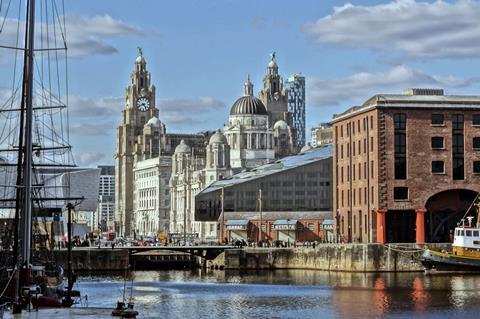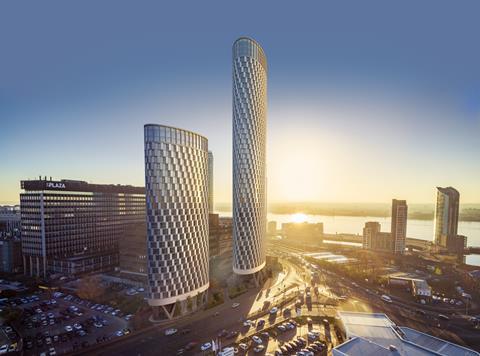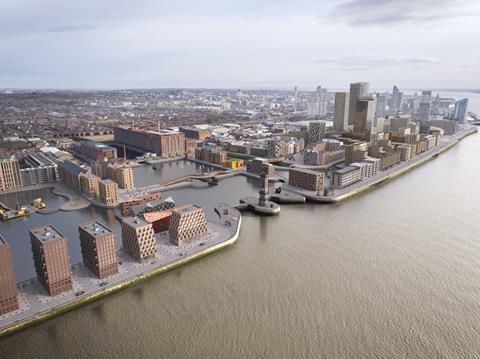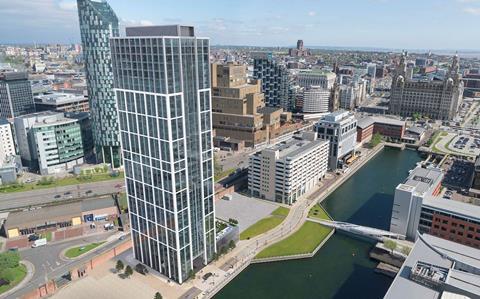World Heritage Committee advised not to strip city of global accolade - but to keep it on ‘in danger’ list

Liverpool is set to win more time to demonstrate its commitment to preserving the city’s Unesco World Heritage status after being threatened with losing the recognition because of the impact of new developments.
A draft report to this year’s World Heritage Committee meeting, which starts later this month in Bahrain, reacts favourably to measures proposed by the city council and endorsed by Historic England and the Department for Digital, Culture, Media and Sport.
It recommends committee members to keep Liverpool on the “in danger” list pending further details.
The global heritage watchdog last year warned city bosses that removing the status – which ranks its most famous buildings alongside the Tower of London and the Houses of Parliament in importance – would be an option if a more constructive approach was not taken to preserving the setting of gems such as the Three Graces, the Albert Dock, St George’s Hall and Lime Street Station.
Unesco’s concerns focused on developer Peel Holdings’ proposals for the £5.5bn Liverpool Waters regeneration scheme, which covers 60ha of disused docks. It was particularly worried about the height of some components of the scheme, which gained outline planning consent in 2012, and the lack of consideration for heritage sites displayed by the city council in relation to other planning consents.
In response to the threat, the council has come up with a package of measures that includes the creation of a new city “skyline policy”; new neighbourhood masterplans that impose height restrictions; and an independent taskforce to advise the city mayor on how to safeguard its heritage assets.
Known as the Desired State of Conservation for the Removal of the Property from the List of World Heritage Sites in Danger – or DSOCR for short, the document also refers to measures to be contained in a new local plan for Liverpool and a proposed “interpretation and communication strategy” for the city’s World Heritage Status.
Unesco’s just-published report to the Heritage Committee welcomes the move by the city council, Historic England, and DCMS – which it describes collectively as “the state party”, but it notes that the corrective measures proposed are “not yet complete” and are not ready for consideration.
The report also adds that while Peel Holdings has said it will not seek to build out Liverpool Waters to the scale and massing permitted by the Chapman Taylor-designed masterplan that was approved in 2012, the permission is neverthless valid until 2042 and includes a 55-storey tower.
“The current draft DSOCR does not yet incorporate sufficient specific commitment regarding development controls – including specific view line and skyline controls – and reduction to the existing outline planning permission to remove the threats to the authenticity and integrity of the property,” it notes.
“The DSOCR, as currently proposed, relies heavily on future guideline documents which are still in preparation, namely the local plan, the neighbourhood masterplans, the skyline policy and the proposed revisions to the supplementary planning document.”
Unesco said that it would be necessary to assess the content of the documents to “establish a clear commitment by the state party to limit the quantity, location and size of allowable built form” in the buffer zone surrounding Liverpool’s World Heritage Site before its concerns would be allayed.

Although it is recommending maintaining Liverpool’s “in danger” status rather than removing it, the report warned that “serious concerns” remained over the Liverpool Waters. It urged Liverpool and the government to introduce a moratorium on new development within the designated World Heritage Site and its buffer zone until the DSOCR was “completely finalised and approved”.
Liverpool mayor Joe Anderson insisted that the DSOCR report showed “in great detail” the lengths the city had gone to in order to balance the needs of a growing city at the same time as protecting its World Heritage status.
“This is a delicate task and involves all the major city stakeholders working together to understand very specific planning issues and creating solutions that work for the city and Unesco,” he said.
“With the support and input of DCMS I am sure this collaborative approach means we can all ensure Liverpool’s World Heritage status is officially secured when the committee meets.”
Henrietta Billings, director of campaign group Save Britain’s Heritage, which has spent the past 40 years fighting to preserve buildings in Liverpool, said Unesco’s draft recommendation was a positive step for the city. However she stressed that it wasn’t a final decision.
“No one wants to see this international badge of honour removed from such an important city,” she said.
“This recommendation is a positive signal from Unesco – and gives everyone round the table the platform to find a heritage-led strategy for development in the World Heritage Site and one that will drive up tourism and boost the local economy.
“There is still a lot of work to do to get the site off the ‘at risk’ list, but it’s an exciting opportunity for Liverpool and Britain.”
Last month Peel Holdings released images of its revised masterplan proposals for part of Liverpool Waters, which are being overseen by Planit-IE.
The latest version of the scheme relocates the development’s proposed Central Park closer to the River Mersey, redesigns Clarence Square at Central Dock and alters the layout of various pedestrian areas to prioritise pedestrians and cyclists and maximise views of the river.















No comments yet